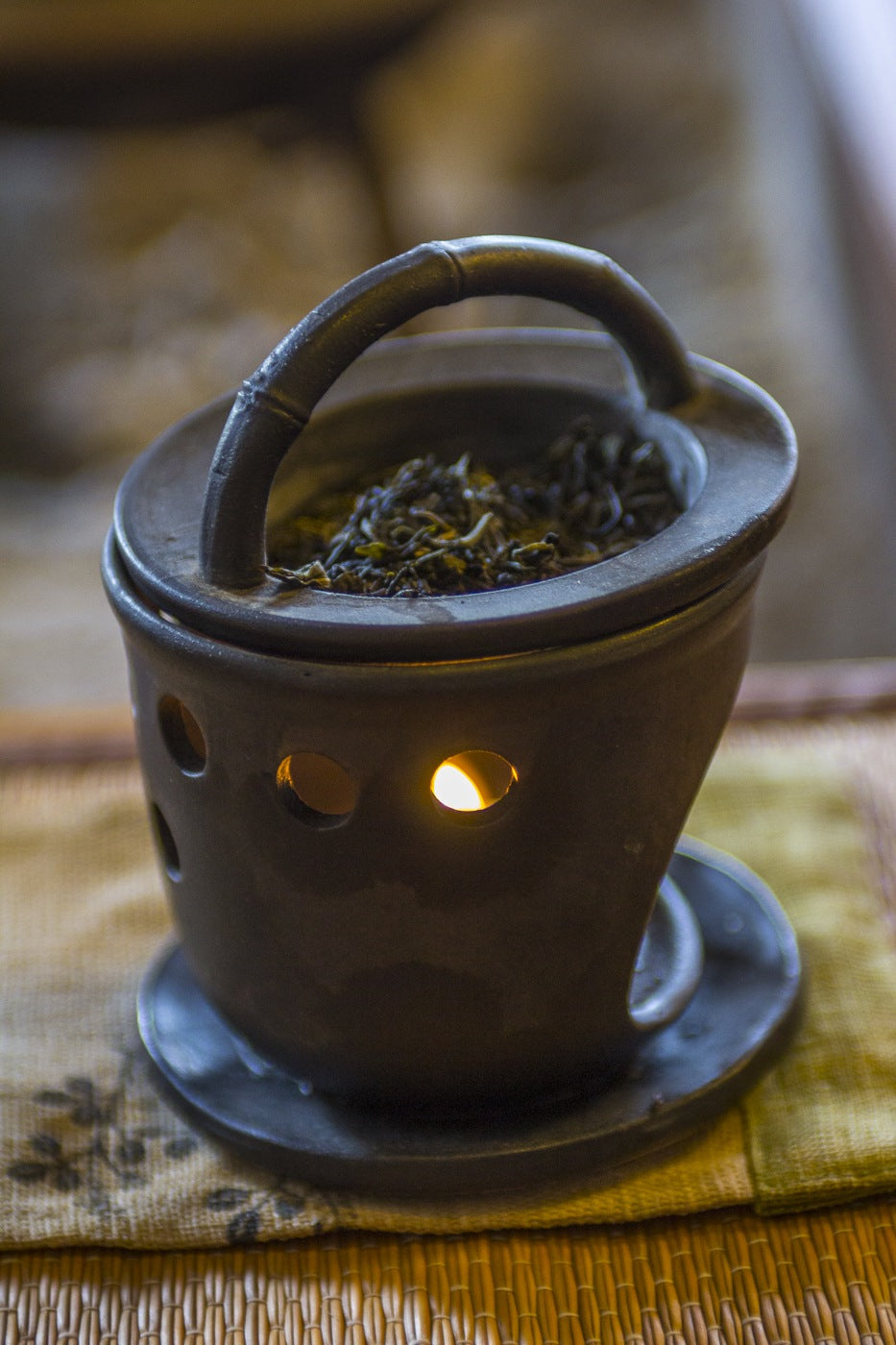
FIRST TEA PICKING IN MARCH, EI, KAGOSHIMA PREFECTURE
Why Green Tea Is Good For You
How It Works
All various kinds of tea come from the leaves of the same plant, Camellia sinensis. The three main types of tea are green tea, oolong tea, and black tea.
The difference between them is leaf fermentation as it influences their oxidation levels. When tea leaves are steamed (like with sencha, white tea, tamaryokucha or gyokuro), baked, or pan fried (like with kamairicha), there is no oxidation and therefore the leaves remain green. Oolong tea is partially fermented, and black tea is fully fermented.
Green tea has become increasingly popular over the last few years, and there are numerous reasons for this phenomenon. If you’re not already drinking green tea, you may be missing out on some of its amazing health benefits! Green tea contains many polyphenols, especially epigallocatechin gallate (EGCG), which have been shown to help with heart disease, immune health, anti-cancer properties, and so much more!


Your Daily Supefood !
Green tea has been touted as a superfood by many sources, and with good reason – it’s full of antioxidants, natural flavonoids, and other ingredients that have been shown to improve health and slow ageing.
1. Green tea gives you the power of calm attentiveness
The tea amino acid L-theanine has a relaxing, but not sedating, effect. It is renowned for its ability to put you in the ideal state of “calm attentiveness” which can sharpen focus and concentration while reducing stress and enhancing overall well-being. Theanine can interact with caffeine, allowing a smaller dose of caffeine to have a stronger effect in terms of boosting concentration and alertness.
2. Green tea keeps teeth healthy
Catechin and fluorine limits the growth of the bacteria causing tooth decay. Freshen your mouth with a cup of tea after meals!
3. Green tea burns body fat
Caffeine promotes the metabolism of fat. Drinking green tea and engaging in physical activity 20-30 minutes afterwards burns up body fat and acts as a muscle stimulant.
4. Green tea makes your skin beautiful
Drinking tea maintains the skin’s elasticity, and the vitamin C strengthens capillaries. It also improves the skin’s ability to retain warmth.
Your Daily Superfood
5. Green tea prevents high blood pressure
Tea increases the levels of HLD (good cholesterol) in the blood and inhibits high blood pressure.
6. Green tea boosts immunity
Thanks to catechines, green tea boosts the body’s defences against infection, so using it as a gargle protects against viruses. Green tea is a great detox boost after indulging in rich food or alcohol drinks!
7. Green tea balances pH and has antibacterial properties
The strong antibacterial properties of green tea limit oxidation in the body and maintains a good pH balance by promoting the body’s alkalinity. This helps against inflammations and pain due to body acidification.
8. Green tea prevents food poisoning
Green tea catechin has a powerful effect on bacteria causing food poisoning and regulates intestinal functions.
9. Green tea lowers blood glucose levels
The conjugated polysaccharide found in green tea helps lowering blood glucose levels and prevent diabetes.
10. Green tea prevents ageing
Green tea suppresses the production of free radicals and lipid peroxide, and therefore prevents the onset of physical ageing.


What's In A Cup Of Green Tea?
Components Of Green Tea
Tea has both soluble and insoluble components. The latter can only be ingested when drinking matcha, and this is why matcha is so good for your health. The first category is found in all kinds of tea, at various levels depending on the cultivar, the type of tea, its quality and the temperature used to brew it. Our infographic on the components of matcha will tell you everything you need to know about this wonderful drink!
Many factors contribute to your preference for a particular tea. Some cultivars have more umami, some have more astringency or bitterness (linked to caffein and catechin).
To adjust the taste of your cup of tea, you can control the water temperature to release different components in different quantities. The higher the temperature, the more caffein and bitterness in your cup, but remember, never use boiling water on your green tea!
Astringency and bitterness are linked with caffein and catechin (tannin). Those are released at higher temperatures. Therefore, high quality tea should be prepared with a lower temperature.
Note that catechin and caffeine have both positive health impact, so they should not be avoided at all costs. Depending on your personal preferences, however, you may want to make sure that not too much of them is released.
